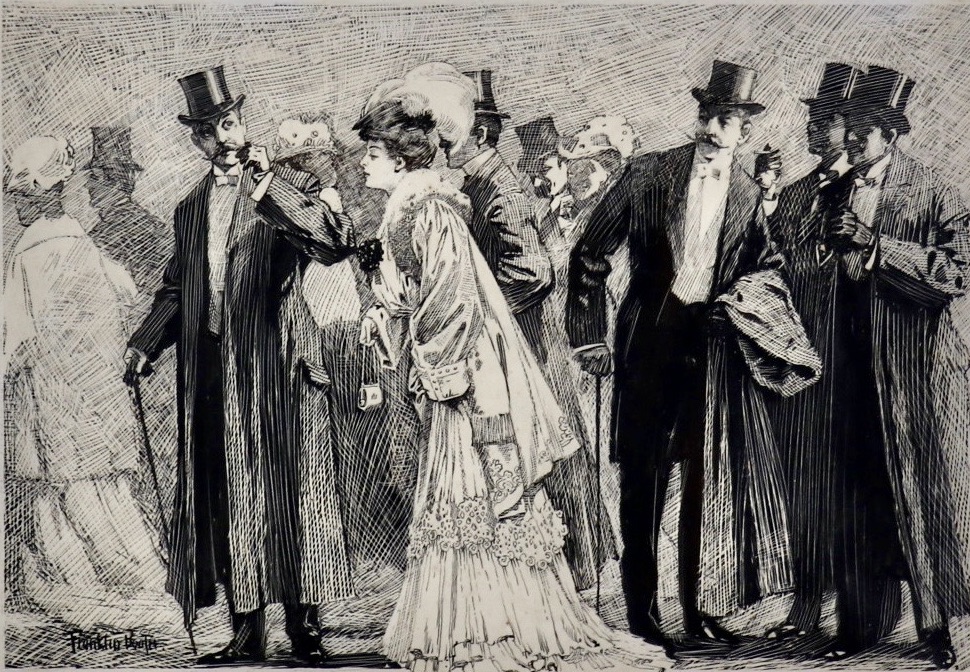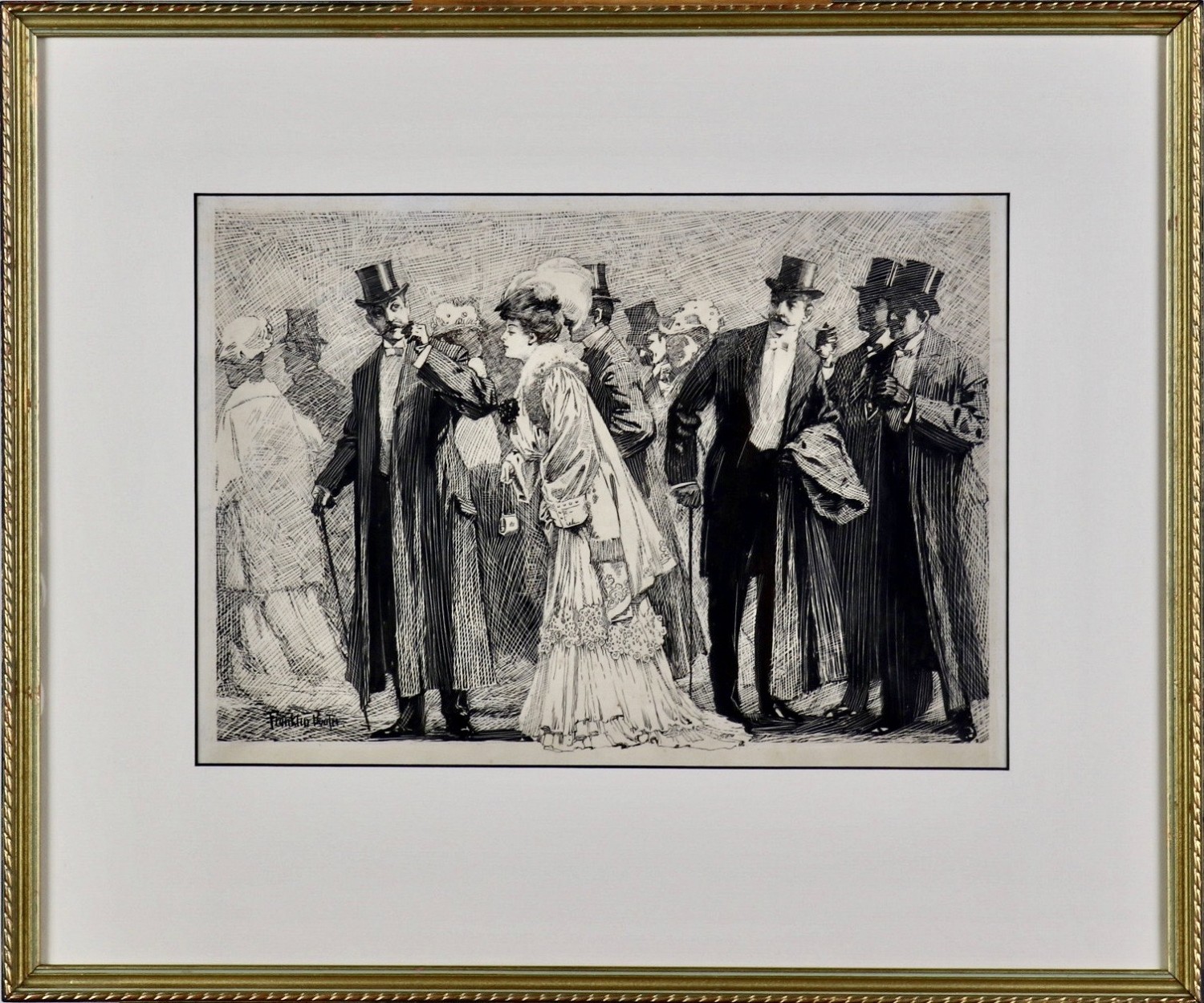""The Thief," Story Illustration for Everybody's Magazine" Lot no. 4406
By Franklin Booth 1874-1948
1908
9.25" x 13.25"
Scratchboard
Signed "Franklin Booth" Lower Left
REQUEST PRICE
PURCHASE REQUEST
"Where the pure child-face had first drifted across his bewildered vision." Illustration for "The Thief," by Constance Smedley, published in Everybody's Magazine, September, 1908, p. 356. Hinged to board; matted and framed.
Exhibited: "Normal Rockwell and the Artists of New Rochelle," Norman Rockwell Museum, May 18, 2002 to October 27, 2002, with exhibition label on frame backing.
Explore related art collections: 1900s / Magazine Stories / $5,000 - $20,000
See all original artwork by Franklin Booth
ABOUT THE ARTIST
As a farm boy near Carmel, Indiana, Franklin Booth wanted to be an artist and so studied pictures in all of the books and magazines available. Most of the reproductions at that time were printed from steel or wood engravings. Mistakenly believing that the drawings were made with pen and ink, he painstakingly copied their character line by line. This was eventually to become the basis for his unique line technique.
Booth described his working methods in the Professional Art Quarterly in 1934, “…In doing a drawing it has been my custom first, of course, to lay in my entire conception with the pencil. This penciled sketch is not a completed thing, but a generalization. Parts of this I then draw in more fully and follow immediately with the pen. My drawings are usually somewhat involved and a completed pencil drawing to begin with would, in place, become smudged and lost in the process of inking in other parts. So I proceed and complete a part or section at a time and follow through, in this way, to the outer edges of my drawing. At times in the making of my drawings, in one section or more, a completed picture will be seen in the midst of white paper and penciled suggestions.
“By this method, also, the general relationship of values of the whole drawing, at the start, can be established in one small part. This becomes the guide. The point, therefore, of the beginning of a picture will usually be a place where a section of the darkest dark, the grays and the highest whites appear together.”
In an introduction to Robert Frank’s 1925 book Franklin Booth, a selection of sixty of Booth’s drawings, Earnest Elmo Calkins wrote: “Mr. Booth has done more than almost any one man to break down the barrier between the pure art of decoration as applied to the book or magazine page and the same art applied to the advertising page. Anything undertaken by him is approached in the same creative spirit and executed with the same sure touch…”



